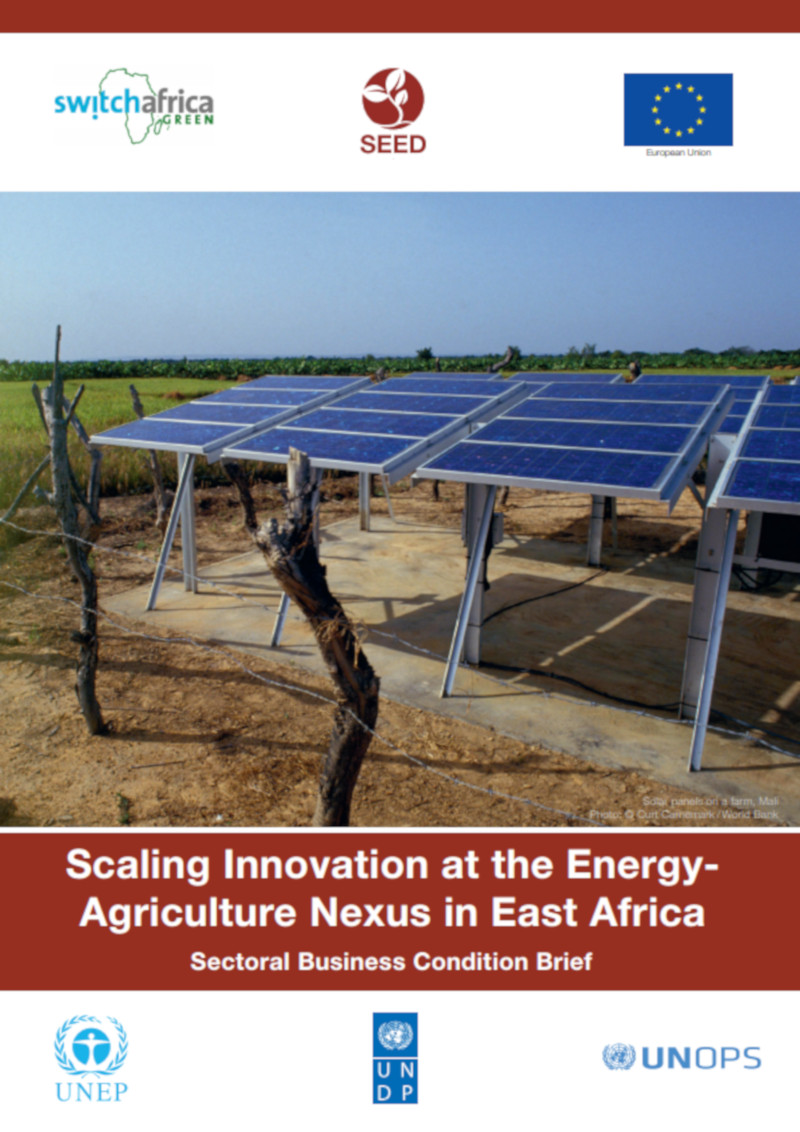Scaling Innovation at the Energy-Agriculture Nexus in East Africa: A Sectoral Business Condition Brief

Energy and agriculture form a nexus. On one hand, energy can be generated by using crops, agricultural residues, and livestock waste. On the other hand, substantial amounts of energy are required along the agricultural and food processing value chain, accounting for around 30 % of the global energy consumption.
In the 10 years of the SEED Awards, we have seen a trend towards innovation at the nexus between energy and agriculture in East Africa. East Africa is among the regions where most technological solutions at the nexus are developed and applied. Eco-enterprises develop and adopt diverse low-cost solutions such as solar pumping, heating, drying, cooling and chilling, biogas production and biomass-powered milling, pressing and grinding for smallholder farmers and Small, Medium and Micro-sized Enterprises (SMMEs) to power their agriculture, or generate clean energy. These technologies can lead to increased agricultural productivity and strengthen smallholders through direct access to markets. However, several barriers prevent solutions at the nexus from reaching scale, including relatively high technology costs, limited awareness on the benefits of using green energy solutions, lack of reliable policy incentives, as well as limited access to finance for both technology innovators and customers. Read the below brief to discover how policymakers can catalyse the development of the sector through providing consistent policy strategy and coordinating sector activities, investing in research and development of appropriate technologies at the local level, incentivising the application of technologies at the nexus, and facilitating access to finance.
